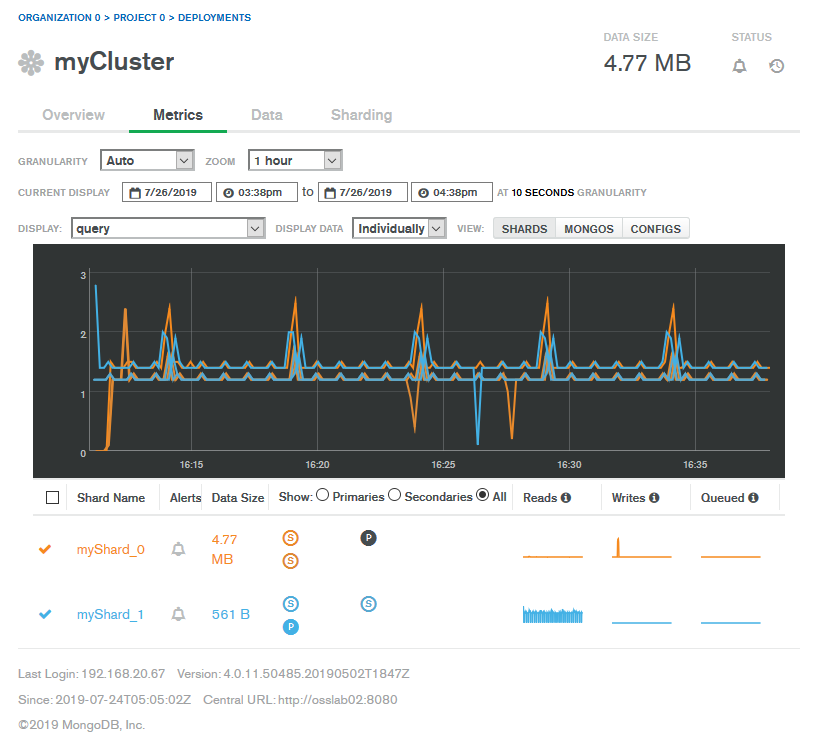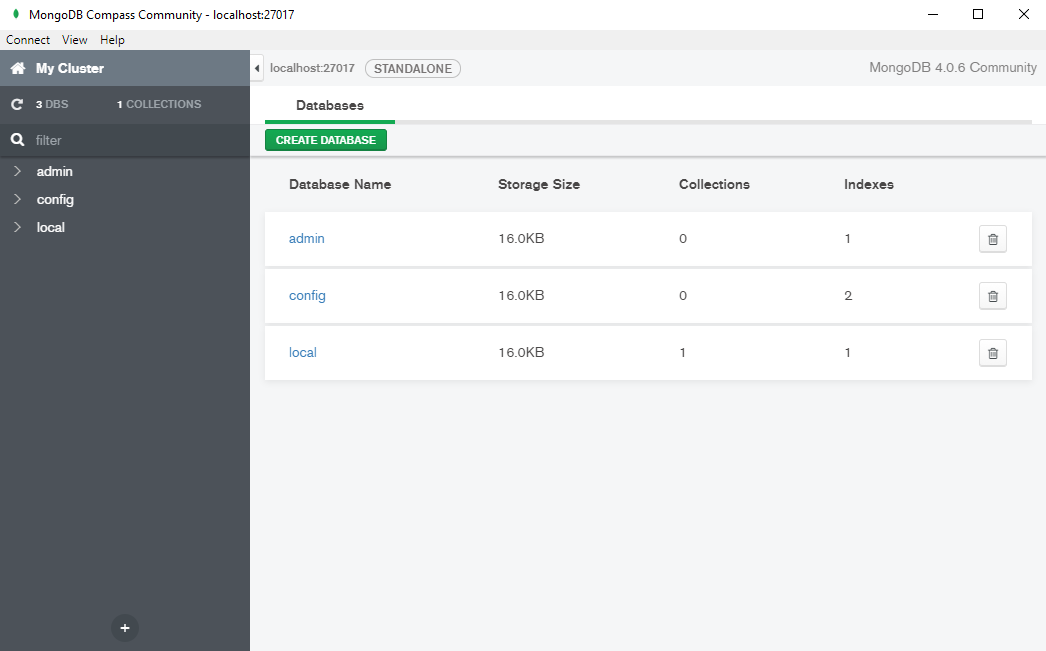

- #NOSQL MANAGER FOR MONGODB 使用 HOW TO#
- #NOSQL MANAGER FOR MONGODB 使用 CODE#
- #NOSQL MANAGER FOR MONGODB 使用 PASSWORD#
- #NOSQL MANAGER FOR MONGODB 使用 PC#
- #NOSQL MANAGER FOR MONGODB 使用 DOWNLOAD#
I’ve created the configuration files for these already, and you can clone the example from GitHub: git clone Ĭd /mongo-k8s-sidecar/example/StatefulSet/ To set up the MongoDB replica set, you need three things: A StorageClass, a Headless Service, and a StatefulSet. Then, authenticate into the cluster: gcloud container clusters get-credentials test-cluster

Feel free to customize the command as you see fit. This will make a three node Kubernetes cluster. To create a Kubernetes 1.5 cluster, run the following command: gcloud container clusters create "test-cluster" Once you have a Google Cloud project created and have your Google Cloud SDK setup (hint: gcloud init), we can create our cluster. If you want to follow along with this tutorial and use Google Cloud Platform, you also need the Google Cloud SDK. The sidecar container used for auto-configuration is also unsupported.īefore we get started, you’ll need a Kubernetes 1.5+ and the Kubernetes command line tool. Note: StatefulSets are currently a beta resource. You can create and manage your MongoDB replica set natively in Kubernetes, without the need for scripts and Makefiles. With StatefulSets, these headaches finally go away. Scaling the set up and down meant managing all of these resources manually, which is an opportunity for error, and would put your stateful application at risk In the previous example, we created a Makefile to ease the management of these resources, but it would have been great if Kubernetes could just take care of all of this for us. You had to manually create a disk, a ReplicationController, and a service for each replica. While the replica set in my previous blog post worked, there were some annoying steps that you needed to follow.
#NOSQL MANAGER FOR MONGODB 使用 HOW TO#
If you’ve followed my previous posts, you know how to create a MEAN Stack app with Docker, then migrate it to Kubernetes to provide easier management and reliability, and create a MongoDB replica set to provide redundancy and high availability. With StatefulSets, Kubernetes makes it much easier to run stateful workloads such as databases. Kubernetes 1.5 includes the new StatefulSet API object (in previous versions, StatefulSet was known as PetSet). At Google, everything runs in a container, including databases. “Containers are stateless!” they say, and “databases are pointless without state!”
#NOSQL MANAGER FOR MONGODB 使用 CODE#
The code examples need changes to work on a current Kubernetes cluster.Ĭonventional wisdom says you can’t run a database in a container.
#NOSQL MANAGER FOR MONGODB 使用 DOWNLOAD#
If you are using Luminate RSA Key, you should download the file from the Luminate User Portal and provide the path to the file in Private Key field.Warning: This post is several years old.
#NOSQL MANAGER FOR MONGODB 使用 PASSWORD#
If you are using Luminate Access Token, you should copy it to the Password field (in most clients, when leaving this field empty, the client will prompt for the password during the connection). Please use the fields copied in the previous step to configure SSH Host and User fields. Copy the "Host Name for SSH Client" and "User Name for SSH Client" fields from the UI:īelow are the connection configuration windows for noSQL Manager clients for MongoDB and for Cassandra: Choose the relevant SSH Server from the list of the applications (this should be the SSH Server / Bastion that has connectivity to the PostgreSQL Servers inside the corporate datacenter)Ĭ. Log in to the Luminate User portal using your web browser at the following address: b.
#NOSQL MANAGER FOR MONGODB 使用 PC#
The basic assumption is that there is no network connectivity between the DBA's PC and the corporate data center and that the access is being done via Luminate Security. The below diagram depicts the components of the system: This article will explain the required configuration steps and the resulting end-user experience. Luminate allows Database Administrators to connect to MongoDB and Cassandra databases hosted in company data centers using various methods. For basic explanation about Luminate and how it works, please refer to this article. Luminate Security offers a Software-as-a-Service application access platform that allows users to connect to any kind of application hosted on any datacenter platform without the need to have a direct network connection.


 0 kommentar(er)
0 kommentar(er)
